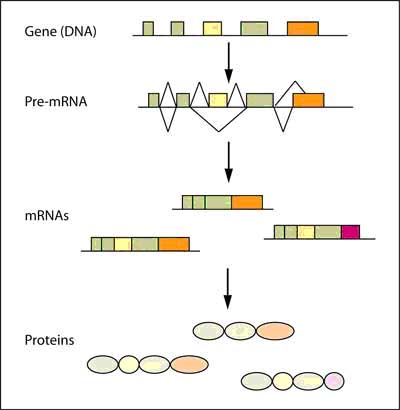I thought there were 64 codons and those are either stop codons or ones which code for amino acids. So how can you have non coding DNA? What makes it inactive?
You are using an out of date browser. It may not display this or other websites correctly.
You should upgrade or use an alternative browser.
You should upgrade or use an alternative browser.
What makes introns non-coding?
- Thread starter visceral_instinct
- Start date
Specifically what was it on the wikipedia pages on the subject did you not understand?
DNA can only be said to encode amino acids when the DNA is in the context of a gene. The gene structure dictates the start and stop codons and where and when the gene is transcribed to produce mRNA. If DNA isn’t within a gene then it isn’t transcribed into mRNA, so it doesn’t code for anything. The amount of DNA in a given genome that is actually part of a gene varies depending on the organism. In bacteria virtually all the DNA is part of genes (ie, there is little non-coding DNA). In humans only a small fraction of the DNA in our genome is actually part of a gene (ie. there is lots of non-coding DNA). That's not to say that non-coding DNA doesn't serve a function in the cell. It can and does, but that's another topic.
In eukaryotic cells, intron sequences within genes are spliced out of the pre-RNA in the nucleus to produce the mature mRNA. Thus, although intron sequences are contained within the gene they do not contribute amino acids to the peptide when the mRNA is translated out in the cytoplasm.

As always, I recommend that people with basic genetics questions go to DNA From the Beginning and work their way through the tutorials. It’s a comprehensive resource. The answers to your question will be contained within the 'Genetic Organisation and Control' section.
http://www.dnaftb.org/
In eukaryotic cells, intron sequences within genes are spliced out of the pre-RNA in the nucleus to produce the mature mRNA. Thus, although intron sequences are contained within the gene they do not contribute amino acids to the peptide when the mRNA is translated out in the cytoplasm.

As always, I recommend that people with basic genetics questions go to DNA From the Beginning and work their way through the tutorials. It’s a comprehensive resource. The answers to your question will be contained within the 'Genetic Organisation and Control' section.
http://www.dnaftb.org/
Last edited:
Thanks Hercules. 
